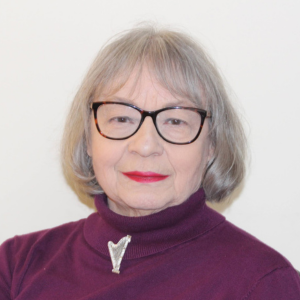
Each installment of our Tear-Out Tunes series features a new piece written by one of the best harpist-composer-arrangers in the business. Each composer will tell you a little bit about their piece, and also give you some helpful tips for learning it and getting the most out of the experience. The new piece (on the following pages) is yours to keep. We even put it right in the middle of the magazine so you can tear out these four pages and put your new tune on your music stand.
Download this issue to get this tune now!
Often I have been asked, “How do you create your music? Where does it come from?” Composing music is an individual and personal undertaking. My best work usually begins while lying in bed, half awake, at about 4:00 a.m. The sounds and ideas start to fly around in my head, and gradually I settle on something I like, at which point I bounce out of bed to look for paper upon which to scribble my thoughts. Without writing notes of some kind, the ideas just evaporate, despite my best efforts. It is a story common to most creative people in all mediums. I have a drawer full of musical fragments. Writers have notebooks. Artists have sketch pads.
Many things can inspire a composition—an emotion, a memory, a person, a place, an event—the list is endless. When my little dog died, I wrote “Dilly Dog,” which resides in my book Stage One Solos. I use this piece to encourage young students to express their own feelings by creating an original piece. My arrangement of “Morning Has Broken” was inspired by the sight of the rising sun while on a red eye flight. Heart Suite—a set of three love songs in the Italian style—was written as a gift to my husband on our 35th anniversary. The White Mountain Suite depicts my life-altering experiences as a New Yorker moved to the “wilds of New Hampshire.” “Memoriam” was my tribute to New York City after the 9/11 tragedy. More recently, “Butterflies” was written for the annual butterfly release ceremony held by the New Hampshire Audubon Society in remembrance of children who have suffered and died from the ravages of cancer.
Many things can inspire a composition—an emotion, a memory, a person, a place, an event—the list is endless.
In addition to inspiration, compositions need structure. Traditional musical structures are frameworks within which musical ideas can be organized. They can range from chants, songs, dances, simple A-B or A-B-A patterns, variations, chorales, fugues, to the almighty sonata allegro form which has stood as the foundation for innumerable major musical works for centuries.
When Harp Column requested that I write a two-page piece, playable on either pedal or lever harp—that became my structure. As is the case in most of my compositions, I wanted the piece to be accessible to a wide variety of players. Then, because we live in a rather dark world at the moment, I wanted the new piece to be lively and fun—this was my inspiration. And so, “Bright Spot” was conceived.
Often music begins with a melody or fragment thereof. But sometimes an interesting rhythmic pattern or chord progression might trigger a piece. “Bright Spot” grew out of a bass line pattern that has a sort of Latin flavor. To this I added tympanic sounds played by tapping with your right hand fingertips on the soundboard. Gradually, a melody evolved. The melody is played by the right hand with tympanic sounds filling in between phrases. As a secondary melody evolved, it spawned some harmonic changes, but I quickly realized those would create problems for lever players. “Bright Spot” builds on a continuous left-hand pattern, thus restricting the use of that hand for lever changes. Consequently, I had to use as few accidentals as possible—and those I did use had to be carefully planned.
The piece is written in C major. The first accidental (F#3) occurs in measure 19. The only time that string is used prior to that is the grace note in measure 15. So lever players can set the F#3 at the beginning and omit the F natural grace note. During the second ending, the F#3 can be set to natural. Lever changes are indicated by diamond shaped notes placed directly on the staff. Pedal changes are notated below the staff.
Since I needed to limit harmonic changes, I had to create variety in other ways. So after the repeat, I wrote a section with a new melody using thirds, again played by the right hand. This melody is marked pdlt—pres de la table—meaning to play low on the strings, very near the soundboard. This creates a guitar-like sound, often referred to as a change of color. As the melody progresses, it returns to the normal position (loco). Additionally, I filled the spaces between melodic phrases with single harmonic notes (another color change). Please note harmonics are played where they are written. Finally, the piece ends with a short, flashy glissando.
Creative ideas may begin as inspirations but the development of those ideas involves a lot of hard work—and time. A piece of music does not happen all at once. It goes through innumerable versions and edits before it reaches completion. I hope this music provides a “Bright Spot” in your day.•







